Pipistrellus pipistrellus - Pipistrelle Bat
Phylum: Chordata - Class: Mammalia - Order: Chiroptera - Family: Vespertilionidae
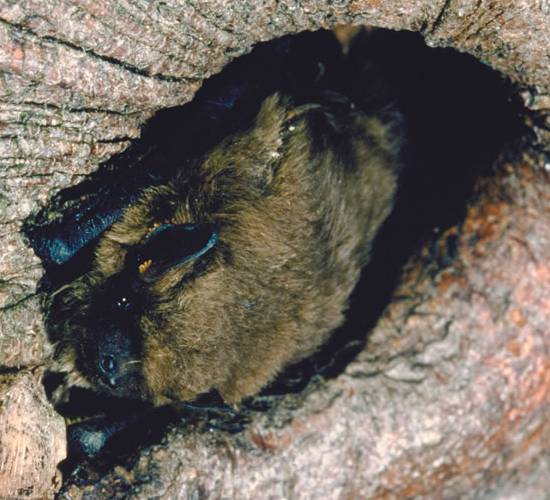
Picture courtesy of the Countryside Council for Wales
The smallest and most plentiful bats in Britain, and widespread throughout most of Europe, the Common Pipistrelle (a female is shown here with her young) is typically 3.5 to 5cm head-and-body length and weighs between 4 and 8gm. Because these very common bats occur in towns as well as in the countryside and they often fly at head height, they are extremely noticeable despite their small size. Most pipistrelles are somewhat darker brown on the back than they are underneath.
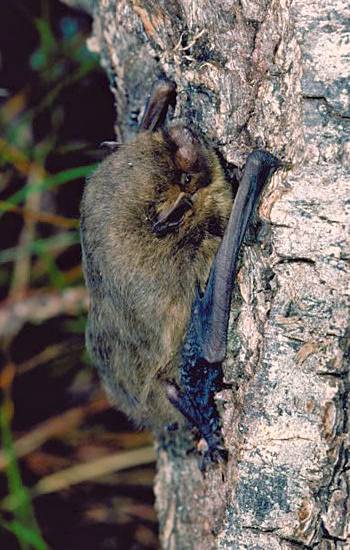
Picture courtesy of the Countryside Council for Wales
Until quite recently all pipistrelle bats were thought to be of the same species, but most experts now agree that that there are three distinct species of pipistrelle bats.
The various species are very similar in appearance, but they differ in the frequency of their echolocation calls. (There are also genetic differences, of course.) For example, Pipistrellus pipistrellus, the Common Pipistrelle, has an echolocation frequency of approximately 45 kHz, while Pipistrellus pygmaeus (known as the Soprano Pipistrelle) uses a frequency of 55 kHz. The other, quite rare pipistrelle is Nathusius's Pipistrelle - Pipistrellus nathusii.
Habitat and flight
Emerging soon after sunset, a pipistrelle bat can consume up to 3000 insects in a night: that would amount to over million insects per year if the cold winter weather didn't make bats less active (and the insects less plentiful).
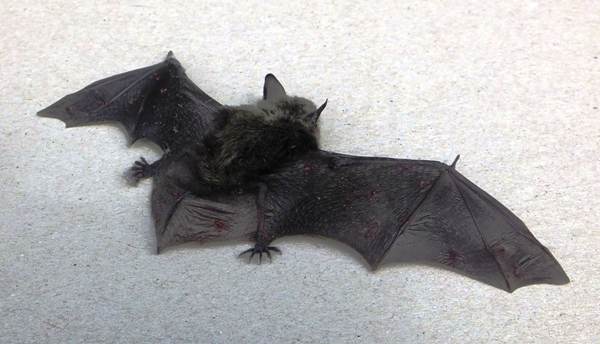
Pipistrelle bats can live up to sixteen years; so in a lifetime they each do a great deal to control the populations of biting midges that would otherwise make life intolerable for humans.
Roosts
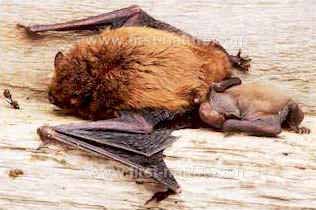
In summer, pipistrelles roost in tree holes, in confined roof spaces and in small crevices on the outsides of buildings. Pipistrelles usually have a single offspring, but occasionally twins, in June or July. The young are fed on their mother's milk until, within three weeks of birth, they are able to make their first flights and begin foraging for food. Maternity roosts are occupied between May and August and sometimes into September, the pipistrelles moving site periodically; this makes counting bat numbers more difficult.
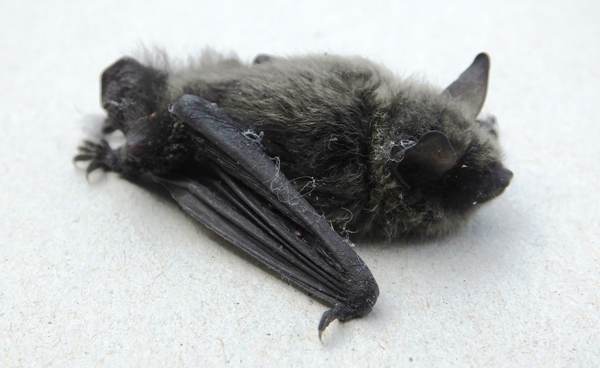
Pipistrelles may use similar roosts in winter - certainly it is rather unusual to find large colonies in underground caves, where many other kinds of bats do indeed spend the winter.
Please Help Us: If you have found this information interesting and useful, please consider helping to keep First Nature online by making a small donation towards the web hosting and internet costs.
Any donations over and above the essential running costs will help support the conservation work of Plantlife, the Rivers Trust and charitable botanic gardens - as do author royalties and publisher proceeds from books by Pat and Sue.